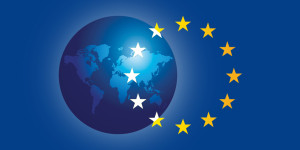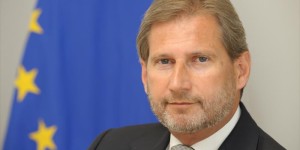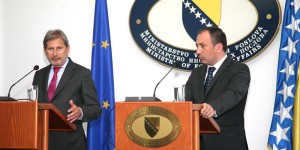Well as you can see I came home a little bit earlier than I expected, I was planning to brief the EU Member States on Friday on the situation in Bosnia and Herzegovina.
We had a constructive meeting with the political leaders and institutions of Bosnia and Herzegovina yesterday in Brussels and we thank the leaders for their approach.
For that reason we put the meeting on hold, we stopped the clock so to say, and we gave the leaders until 10 October to come back with a concrete proposal building on their own principles on the issue of how to resolve the European Court of Human Rights ruling, the ‘Sejdic-Finci’ ruling and how to make sure we will have an EU co-ordination mechanism put in place.
Now it’s very clear that the responsibility sits with the leaders, I say that all the time, but obviously I come home to facilitate – if there is something to facilitate. I believe that it’s do-able, basically looking at the constructive exercise yesterday but the devil is in the detail and let’s see what comes out of it once the leaders have finished with their own consultations.
Q1: It has been told that the EU will engage actively in finding the solution. How will that engagement look like?
What we have said from day one actually, from the first day I set foot on the ground is that we have the biggest Delegation in the world to assist you, to facilitate you with the decision.
We are not taking responsibility for the decision-making – forget that. Those day are over, it isn’t going to happen again. You don’t need to ask me that question, you always ask the same question, it’s over. We will facilitate all we can, we sit down, we will be creative, we will help with the expert advice; the decision-making will be taken by those you have voted in to act for you.
So I’ll start meetings already today… but how many meetings, where we will have them, I literally have to figure out now as I drive back into the office. But I expect a very busy weekend.
Q2: Why is the model made for a Croatian member of the Presidency? That is not what (the Sejdic-Finci) ruling is about?
We are not making a model for anyone, why are you asking me that question, I have just explained to you that I am facilitating the conversation that happens between the leaders so I’m not making a model for anything.
Q3: But it is obvious the deal is stuck on that issue.
The way the model will be done will be exactly the way when we were there in March, we will converse with people and figure out where there’s common ground and at the end of the day we are prepared to summarise what the common ground is. But the decision making sits with your leaders.
Q4: What has been concretely agreed in Brussels? What did we get from the yesterday’s meeting?
Nothing is new, you have seen the seven points there, that was what was agreed upon, had there been more they would have put more on the paper. So as you can see there’s a long way to go and there’s a lot of work to be done.
Q5: Do you expect a breakthrough?
I very much hope so.
Q6: Our experts in the Venice commission said that the solution agreed so far are not in line with the European Convention on Human Rights. So, why is the EU satisfied with such a distorted implementation of the Sejdic-Finci rulling?
You have wrong information, we have Council of Europe and Venice Commission people in the room yesterday there was nothing of that sort said, that everything done up until now is wrong and can’t be used. On the contrary they came with very concrete statements on what could and could not [be done] and now it’s up to the leaders to decide how it can be used. Your statement is incorrect and I don’t know where you have that from.



